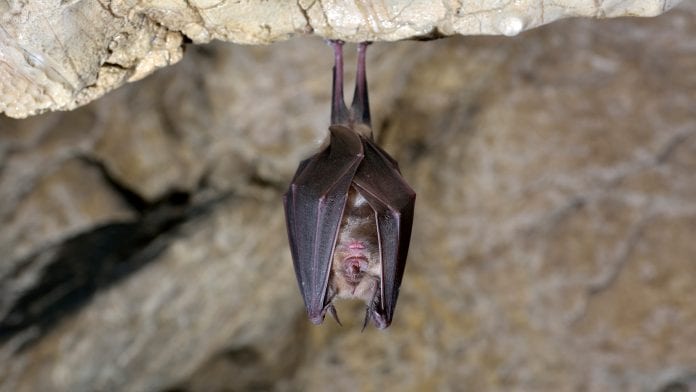
A coronavirus related to the cause of COVID-19 in humans has been found in British bats, researchers say.
In a collaborative research project between the University of East Anglia (UEA), Zoological Society of London (ZSL), and Public Health England (PHE), a novel coronavirus has been discovered in UK horseshoe bats.
The findings have been published in the journal Scientific Reports.
As part of the study, UEA researchers collected faecal samples from over 50 lesser horseshoe bats in Somerset, Gloucestershire, and Wales, before sending them to PHE for viral analysis.
Using genome sequencing, researchers found a novel coronavirus in one of the bat samples. The team referred to this as ‘RhGB01’. This is the first time that a SARS-related coronavirus, known as a sarbecovirus, has been discovered in a lesser horseshoe bat and the first to be discovered in the UK.
Bats have harboured the virus for many years
Researchers concluded that the virus will have been present in the bats for a long time, but has only been found now because it is the first time they have been tested. However, the team stress that the novel coronavirus is unlikely to pose a direct threat to humans, unless it mutates.
A possible cause of mutation could be if a human with COVID-19 passes the infection on to a bat with the sarbecovirus. For this reason, the researchers urge anyone in close contact with bats or their droppings (e.g. those involved with caving or bat protection) to wear appropriate PPE.
Professor Diana Bell, an expert in emerging zoonotic diseases from UEA’s School of Biological Sciences, said: “Horseshoe bats are found across Europe, Africa, Asia, and Australia and the bats we tested lie at the western extreme of their range. Similar viruses have been found in other horseshoe bat species in China, Southeast Asia and Eastern Europe.
“Our research extends both the geographic and species ranges of these types of viruses and suggests their more widespread presence across more than 90 species of horseshoe bats.
“These bats will almost certainly have harboured this virus for a very long time – probably many thousands of years. We didn’t know about it before because this is the first time that such tests have been carried out in UK bats.
“We already know that there are different coronaviruses in many other mammal species too. This is a case of ‘seek and you will find’.
“Research into the origins of SARS-CoV-2, the virus that causes COVID-19 in humans, has focussed on horseshoe bats – but there are some 1,400 other bat species and they comprise 20% of known mammals.
“Our findings highlight the need for robust genotype testing for these types of viruses in bat populations around the world. And it raises an important question about what other animals carry these types of viruses.”
Not a threat to humans
Professor Andrew Cunningham, from the Zoological Society of London, said: “Our findings highlight that the natural distribution of sarbecoviruses and opportunities for recombination through intermediate host co-infection have been underestimated.
“This UK virus is not a threat to humans because the receptor binding domain (RBD) – the part of the virus that attaches to host cells to infect them – is not compatible with being able to infect human cells.
“But the problem is that any bat harbouring a SARS-like coronavirus can act as a melting pot for virus mutation. So, if a bat with the RhGB01 infection we found were to become infected with SARS-CoV-2, there is a risk that these viruses would hybridise and a new virus emerge with the RBD of SARS-CoV-2, and so be able to infect people.
“Preventing transmission of SARS-CoV-2 from humans to bats, and hence reducing opportunities for virus mutation, is critical with the current global mass vaccination campaign against this virus.”
Minimising the risk of mutation
Professor Bell added: “The main risks would be, for example, a bat rehabilitator looking after a rescued animal and infecting it with SARS-CoV2 – which would provide an opportunity for genetic recombination if it is already carrying another sarbecovirus.
“Anyone coming into contact with bats or their droppings, such as bat rescuers or cavers, should wear appropriate PPE – in order to reduce the risk of a mutation occurring.
“We need to apply stringent regulations globally for anyone handling bats and other wild animals,” she added.







